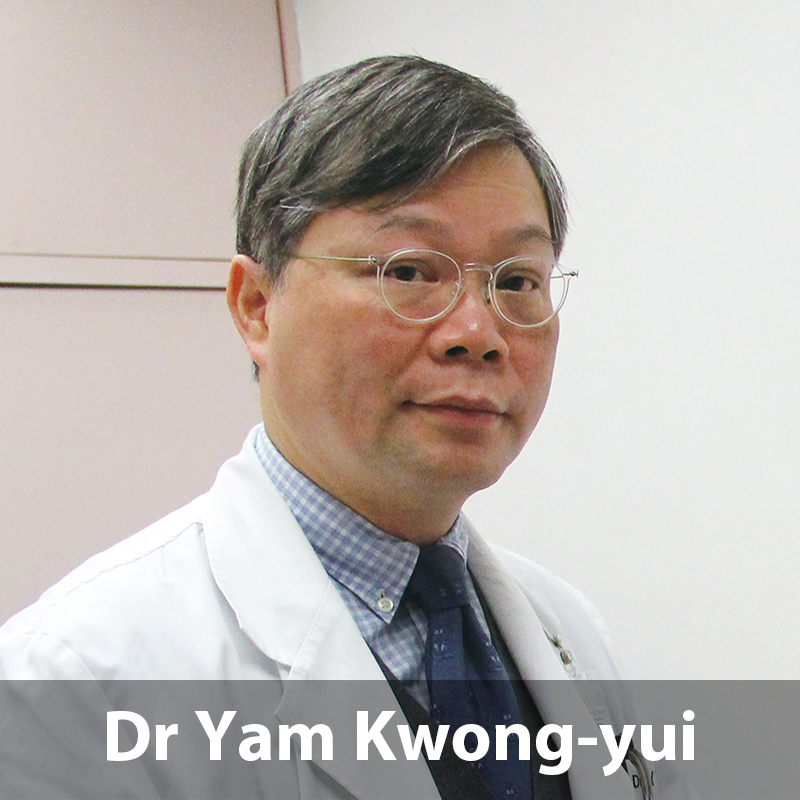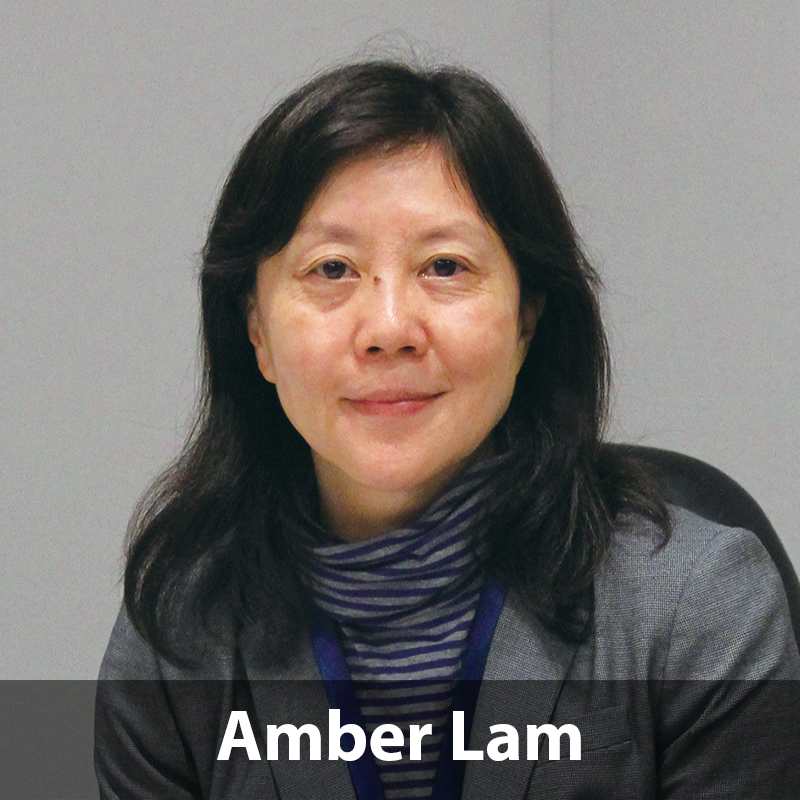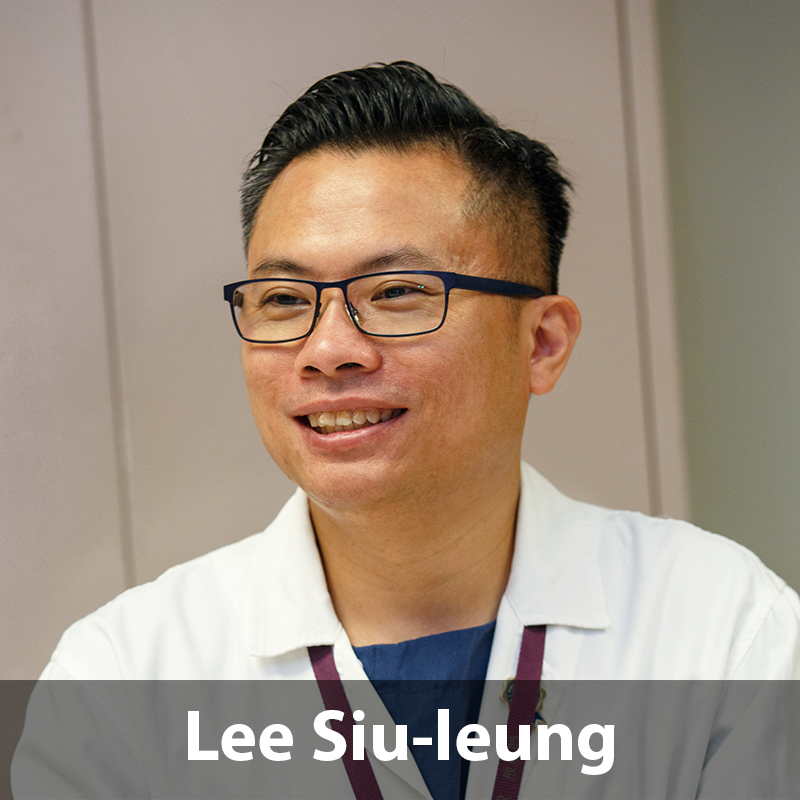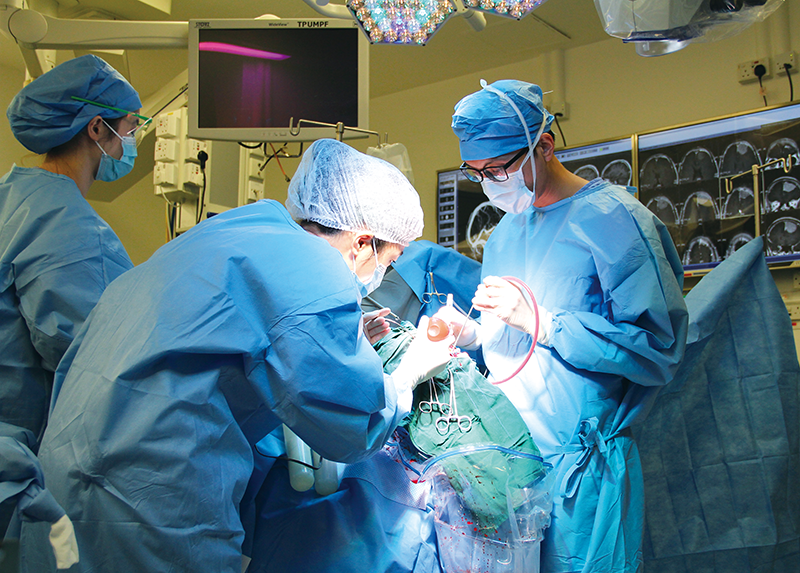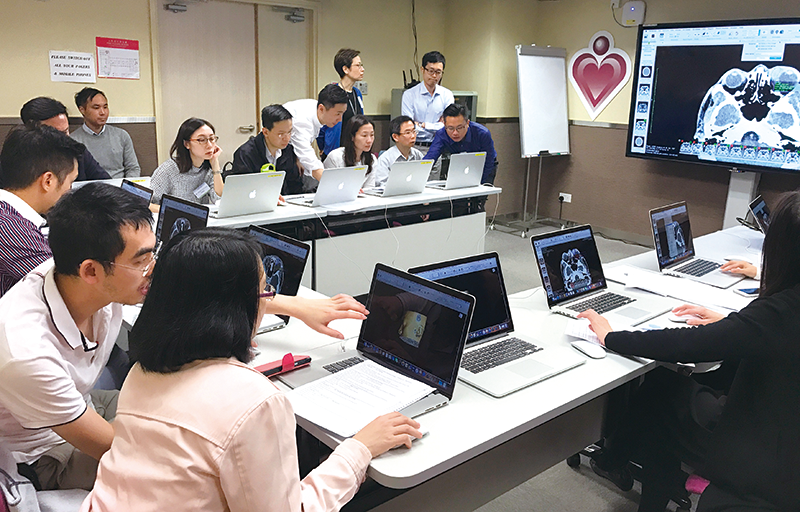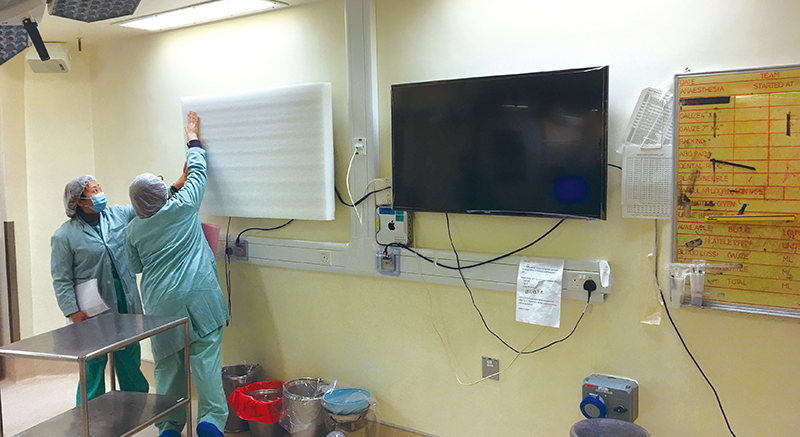Triumph over 9-year uphill struggles
It took Hospital Authority nine years to walk through the winding path of implementing filmless technology corporate-wide. Members of both the head office and cluster project teams braced themselves through a remarkable lobbying process. They not only needed to explain the ideas to colleagues from different hospitals and departments, but also had to convince the management in accepting the paradigm shift and workflow change. After years of tireless efforts, their hard work finally pays off. Let us listen to the linchpins of the project on how they made their way. Their experiences may serve as inspirations for the next service enhancement project.
How did you handle lukewarm receptions from colleagues?
Lee Siu-leung: Our calls for staff participation in the project had sometimes received lukewarm receptions. It is like asking someone to switch to using ‘Cangjie’ Chinese input method but he was already an experienced user of the ‘Quick’ input. Therefore, I put huge efforts in communicating with colleagues from different departments to promote the advantages of the new workflow, which is a streamlined one that enhances service quality and patient safety. As soon as they understood this is the corporate direction and conducive to their work, they were willing to accept the changes and embrace the new technology.
What do you feel the most about working on this project?
Lee Siu-leung: It was a challenging task to roll out the project in the Hong Kong East Cluster over past three years. Despite the lobbying and overtime work, I was willing to commit myself to achieving better clinical services. After the in-depth communication with colleagues from different departments and hospitals these years, I think we all have increased understanding to each other’s needs and difficulties, and we have developed mutual trust, which certainly helps to facilitate our future collaboration.
How do you train colleagues to accommodate the new system and software?
Dr Yam Kwong-yui: The ‘train-the-trainer’ approach is adopted to equip frontline colleagues with basic and advanced techniques of using the image processing system. Apart from organising training workshops, different specialty-specific eLearning videos are developed and uploaded to HA intranet for clinicians’ easy access.
How was the installation of Filmless OT hardware in operating theatres arranged?
Lee Siu-leung: On the premise of not interrupting the operation of operating theatres, the discussion and installation of Filmless OT hardware had to be undergone out of nine-to-five duty hours.
How to protect patient’s privacy when using these radiology images?
Amber Lam: All the image processing systems of Filmless OT Project are located in secured clinical areas with limited staff access. Compared to the old practice in which clinicians could simply search images with any last or first name of a patient, they are now required to key in patient’s unique HKID number for image access. Also, clinicians can only retrieve images of one patient at a time. An access log that records the retrieval date, time, number of images retrieved and location of the workstation will be generated and kept.
The software of the image processing system only runs on Mac OS, which allows no forced encryption on external storage devices. In view of this, head office and cluster IT teams collaborated to work out an approach in supporting clinicians to export their processed images from Mac OS to Windows platform whenever indicated.
Is there any contingency plan in case of system breakdown?
Amber Lam: There is a secondary site or resilience along the whole image distribution flow of Filmless OT Project. This includes the radiology central infrastructure and processed image storage for displaying images inside theatres, image processing systems both inside and outside operating theatres.
Dr Jennifer Khoo: Although we do not develop physical films anymore, we still have a printer for printing radiology images in case there is an emergency breakdown of ‘Picture Archiving Communication System’ at hospital level. Physical films will then be sent to frontline clinicians and stored separately until the technical problems are fixed. All the digitalised radiology images will be uploaded to the central storage again when services resume normal to ensure completeness of medical records. ![]()
● New technology to enhance patient safety
COVER STORY
● No more boundaries for radiology images
● Development of filmless technology
● Streamlined workflow model for four million sets of radiology images
● Triumph over 9-year uphill struggles
FEATURE
● Restoring the distinct past of KWH
● ‘Like for like’ approach in restoration
PEOPLE
● Young physiotherapist builds a playground in developing country
● Most-loved facilities in the playground
HELEN HA
● Small electrical appliances now available at the online shop
WHAT'S NEW
● New leaders adopt a down-to-earth leadership style
● Mothers’ great companion on the journey of breastfeeding
● Measures to facilitate breastfeeding in workplace
● Make the most out of big data in service planning
● Big data analytics platform to be launched by year-end – no copy and take away of data
STAFF CORNER
● TPH psychiatric rehabilitation centre develops multi-disciplinary training for patients’ recovery
● Fall prevention programme helps elders stay safe and healthy
● 我們都在這裡!(Chinese version only)

